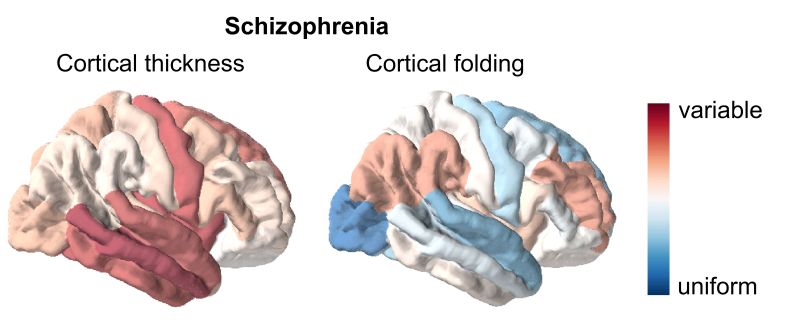Measuring the many shapes of the brain

We are pleased to share our latest publication in the American Journal of Psychiatry: https://psychiatryonline.org/.
Conventional studies of the structural differences between the brains of people with schizophrenia and neurotypical controls rely on mean differences between brain measurements. This can obscure the heterogenous nature of schizophrenia, as it averages out individual differences. Instead, we calculated the variability of cortical thickness, cortical surface area, cortical folding index, subcortical volume, and fractional anisotropy. This enabled us to provide novel insights into the heterogeneity of brain measures in schizophrenia.
Lead by first author Wolfgang Omlor, we found that individuals with schizophrenia exhibit greater variability in cortical thickness, cortical surface area, subcortical volume, and fractional anisotropy within the frontotemporal and subcortical network. This increased structural variability was primarily associated with psychopathological symptom domains.
Unexpectedly we found that cortical folding patterns of the right anterior cingulate cortex were more uniform in individuals with schizophrenia than in control participants. This reduced variability may indicate a less flexible interplay between genetic and environmental factors during neurodevelopment.
We would like to thank everyone from the ENIGMA consortium who contributed to this insightful work.
The study has featured as an article in UZH News (https://www.news.uzh.ch/) and has received some attention already: